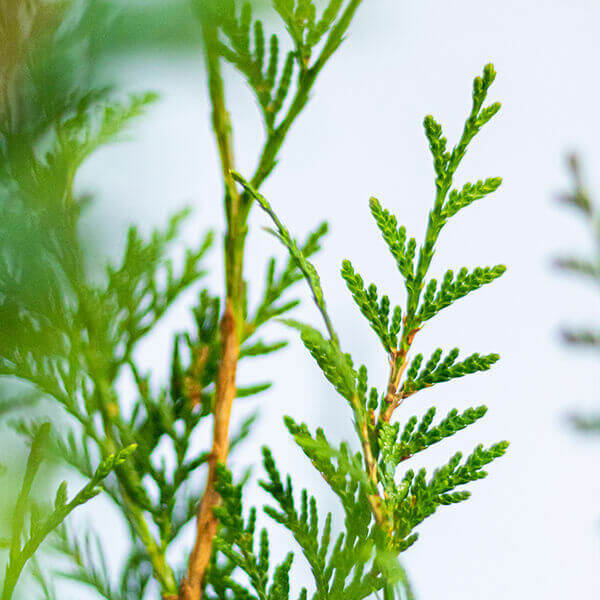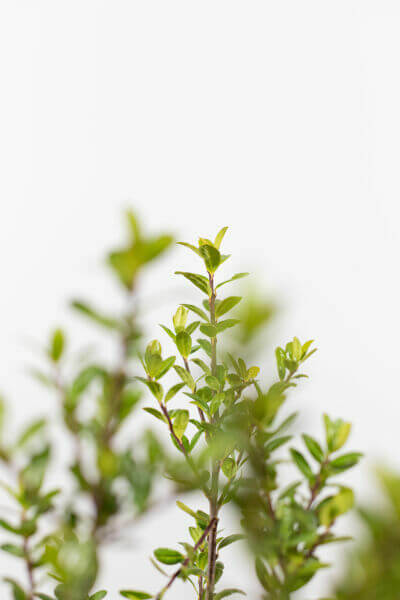Hedge Plants For Winter Berries
Boost your garden's appeal with lush hedge ranges such as Yew (Taxus), Thuja, Laurel, Photinia, and Bamboo, celebrated for their structural stability and ecological benefits.
Yew and Thuja provide evergreen protection and winter durability, while Laurel offers rapid development and broad, aromatic leaves.
Photinia adds seasonal charm with its lively red foliage, and Bamboo lends a low-maintenance, peaceful atmosphere.
These hedges improve air quality, lower noise, and produce tranquil, personal areas.
Correct planting, spacing, and maintenance make sure vigorous growth and ecological harmony.
Explore how these lavish varieties can elevate your garden's beauty and wellness.
Key Takeaways
Change Your Garden With Lush Hedge Ranges
- Select Yew for its thick, evergreen growth and unequaled longevity.
- Choose Laurel for its quick growth and broad leaves, ensuring fast personal privacy.
- Choose Photinia for its dynamic seasonal foliage, which turns a striking dark red.
- Use Bamboo for a low-maintenance, winter-hardy hedge with aesthetic appeal.
- Space plants 2-3 per meter and prune regularly for optimal growth and health.
Popular Hedge Plants
When transforming a garden with rich hedge ranges, it's necessary to think about popular hedge plants such as Yew, Thuja, Laurel, and Photinia due to their unique characteristics and benefits.
Yew (Taxus) is highly esteemed for its durability and thick, green development, making it a prime option for sustaining landscapes.
Thuja is kept in mind for its evergreen foliage and robust winter season strength.
Photinia includes seasonal vibrancy with red leaves that darken gradually, creating vibrant visual appeal.
Laurel uses rapid development and aromatic, broad leaves, perfect for fast personal privacy.
In Addition, Bamboo is an exceptional option for atmosphere, providing a low-maintenance, winter-hardy alternative that improves the garden's aesthetic with its stylish, swaying walking sticks.
These selections accommodate a variety of horticultural needs and choices.
Advantages of Garden Hedges
Garden hedges offer a multitude of benefits, making them an important addition to any landscape. These natural barriers are affordable to execute and provide significant wind defense, improving air blood circulation and adding to noise reduction. The dense foliage of hedges like Thuja and Beech makes sure privacy by obstructing visibility, developing a remote and tranquil environment.
Hedges likewise play an important role in microclimate regulation, supplying a steady environment that fosters plant development and reduces temperature fluctuations. Their intricate leaf structures filter pollutants, enhancing air quality and adding to a healthier garden ecosystem.
Additionally, hedges stand out in sound reduction, taking in and deflecting sound waves to lower ambient noise levels. This double functionality of offering both visual and acoustic personal privacy enhances the total tranquility and visual appeal of any garden.
Planting and Maintenance Tips
For an effective hedge, precise preparation of the planting location is essential. Guarantee the soil has correct pH and drainage to support strong root advancement.
Space the plants properly for the chosen species. Water the hedge often throughout its initial development phase, changing as needed with seasonal changes.
Execute a organized insect control and illness avoidance strategy, using chemical or natural treatments when required. Routinely examine for aphids, termites, and fungal infections.
Apply mulch to keep moisture and suppress weeds. Seasonal pruning promotes dense development and air blood circulation, necessary for plant health.
Following these guidelines will help you cultivate a dynamic, properly maintained hedge that boosts the beauty of your garden.
Spacing and Cutting Guidelines
Spacing and Cutting Standards
Correct spacing and cutting are crucial for cultivating healthy, aesthetically appealing hedges. Sufficient spacing makes sure each plant receives sufficient nutrients, light, and airflow.
Follow these standards for ideal hedge upkeep:
- Spacing: Position hedge plants 2-3 plants per meter to motivate robust development.
- Pruning Techniques: Regular pruning is important for maintaining desired hedge height and shape. Trim new growth in summertime and cut back older wood during winter.
- Seasonal Care: Adjust trimming schedules and methods according to seasonal requirements to guarantee plant health.
- Hedge Height: Routinely screen and trim to maintain the wanted hedge height and attain consistent visual appeals.
Sticking to these steps will ensure your hedge grows, boosting both the appeal and functionality of your garden.
Choosing the Right Hedge
Choosing the Right Hedge
Choosing the proper hedge includes evaluating factors such as mature height, foliage density, and environmental resilience. Effective hedge plant selection requires comprehending each species' development qualities and site-specific versatility.
For example, Yew (Taxus) uses outstanding durability and thick growth, while Thuja is significant for its winter strength. Furthermore, thinking about maintenance requirements is crucial; fast-growing types like Laurel or Privet demand routine trimming, whereas low-maintenance alternatives like Bamboo or Ivy might be more effective for those seeking minimal maintenance.
Environmental aspects such as soil type, light availability, and wetness conditions ought to likewise guide the choice process. This cautious approach guarantees the picked hedges will flourish, offering both practical and aesthetic advantages to the garden landscape.
Delivery and Planting Advice
To ensure your hedge plants thrive, they should be provided by specialized couriers and planted immediately upon arrival.
Follow these essential actions for successful planting:
- Soil Preparation: Improve the soil with raw material to enhance drain and nutrient material.
- Planting Depth: Develop a trench twice the width and equal to the depth of the root ball.
- Watering Methods: Water completely after planting, keeping the soil consistently damp however not filled.
- Mulching: Apply a layer of mulch to keep moisture and reduce weeds.
Consumer Assistance and Service
Given the essential role of timely support in horticultural pursuits, our client assistance team is available six days a week through telephone, email, and social media to offer professional advice and swiftly attend to any issues. Their dedication to quick response times ensures customer complete satisfaction by dealing with inquiries related to plant health, optimal planting techniques, and maintenance schedules.

Accessibility
----------------------
Within 24 hours
This comprehensive support group, strengthened by a stellar 9.3/ 10 consumer rating, highlights our commitment to improving the gardening experience for every single client.
Frequently Asked Questions
For How Long Does It Consider Hedge Plants to Establish?
Hedge plants normally need one to 3 years to end up being totally developed, with the exact period differing by species and growing conditions.
Reliable care throughout this important period is vital for robust development. Consistent watering, vigilant weed control, and suitable fertilizer application are critical in promoting strong root development.
For example, fast-growing species like Laurel may establish quicker, while slower-growing varieties such as Yew may take longer. Thorough upkeep speeds up the establishment process, leading to healthy and thick hedges.
What Are the Finest Hedge Plants for Personal Privacy?
The concern of the best hedge plants for privacy includes examining evergreen and deciduous choices.
Evergreen hedges like Thuja, Laurel, and Cypress offer year-round coverage, making sure constant privacy.
In contrast, deciduous hedges such as Beech use seasonal personal privacy, shedding leaves in colder months.
Secret upkeep suggestions for privacy hedges consist of regular cutting, fertilizing in spring, and appropriate spacing-- typically 2 to 3 plants per meter.
Additionally, constant watering and persistent weed removal are vital for promoting healthy, dense growth.
Can Hedge Plants Draw In Wildlife to My Garden?
Yes, hedge plants can attract wildlife to your garden by supplying vital benefits like shelter, food, and nesting websites, thus boosting local biodiversity. For instance, yew, holly, and laurel are outstanding for attracting birds, while ivy supports a range of insects.
Nevertheless, it is necessary to keep in mind that there are some drawbacks, such as increased upkeep to handle insects and routine upkeep. Carefully picking and maintaining hedge ranges can assist balance these downsides and advantages, ultimately cultivating a lively and sustainable ecosystem in your garden.
Are There Any Flowering Hedge Plants Available?
Yes, there are flowering hedge plants offered that can boost the beauty of your garden.
For example, Elaeagnus, likewise known as Olive Willow, produces aromatic white flowers in the fall, adding a touch of beauty.
Photinia, another popular option, showcases lively red leaves that mature into a rich green, producing a vibrant visual effect throughout the seasons.
To ensure these plants flourish, it's vital to practice correct pruning techniques and seasonal maintenance, such as trimming new growth in the summertime and cutting down in the winter season.
These measures will help maintain the health and aesthetic appeal of your flowering hedges.
How Do I Prevent Pests in My Hedge Plants?
To prevent pests read more in hedge plants, utilize natural insect control techniques and preserve appropriate hedge care. Present helpful pests like ladybugs, which victimize damaging bugs, to produce a balanced environment.
Frequently check your hedges for signs of problem and quickly get rid of any afflicted parts to avoid the spread. Ensure the health of your hedges by applying balanced fertilizers and providing adequate water.
Utilize mulching to retain soil wetness and appropriate spacing to decrease plant tension and promote robust growth. These practices jointly assist in decreasing bug concerns and preserving a healthy hedge.
Conclusion
In essence, choosing the right hedge ranges such as Yew, Thuja, and Laurel can change any garden into a peaceful sanctuary. These plants provide year-round plant, improve visual appeal, and deal practical benefits like noise decrease and wind security.
Appropriate planting techniques, accurate spacing, constant watering, and seasonal cutting are essential for optimum growth.
Trustworthy delivery services and expert client support make sure a seamless experience from purchase to planting, making it easier than ever to raise your outside space.
Garden hedges provide a wide variety of advantages, making them a valuable addition to any landscape. These natural barriers are cost-efficient to execute and supply considerable wind defense, enhancing air blood circulation and contributing to sound reduction. The dense foliage of hedges like Thuja and Beech ensures personal privacy by obstructing presence, producing a remote and serene environment.

Pruning Techniques: Regular pruning is necessary for maintaining preferred hedge height and shape. Trim brand-new development in summertime and cut back older wood during winter.